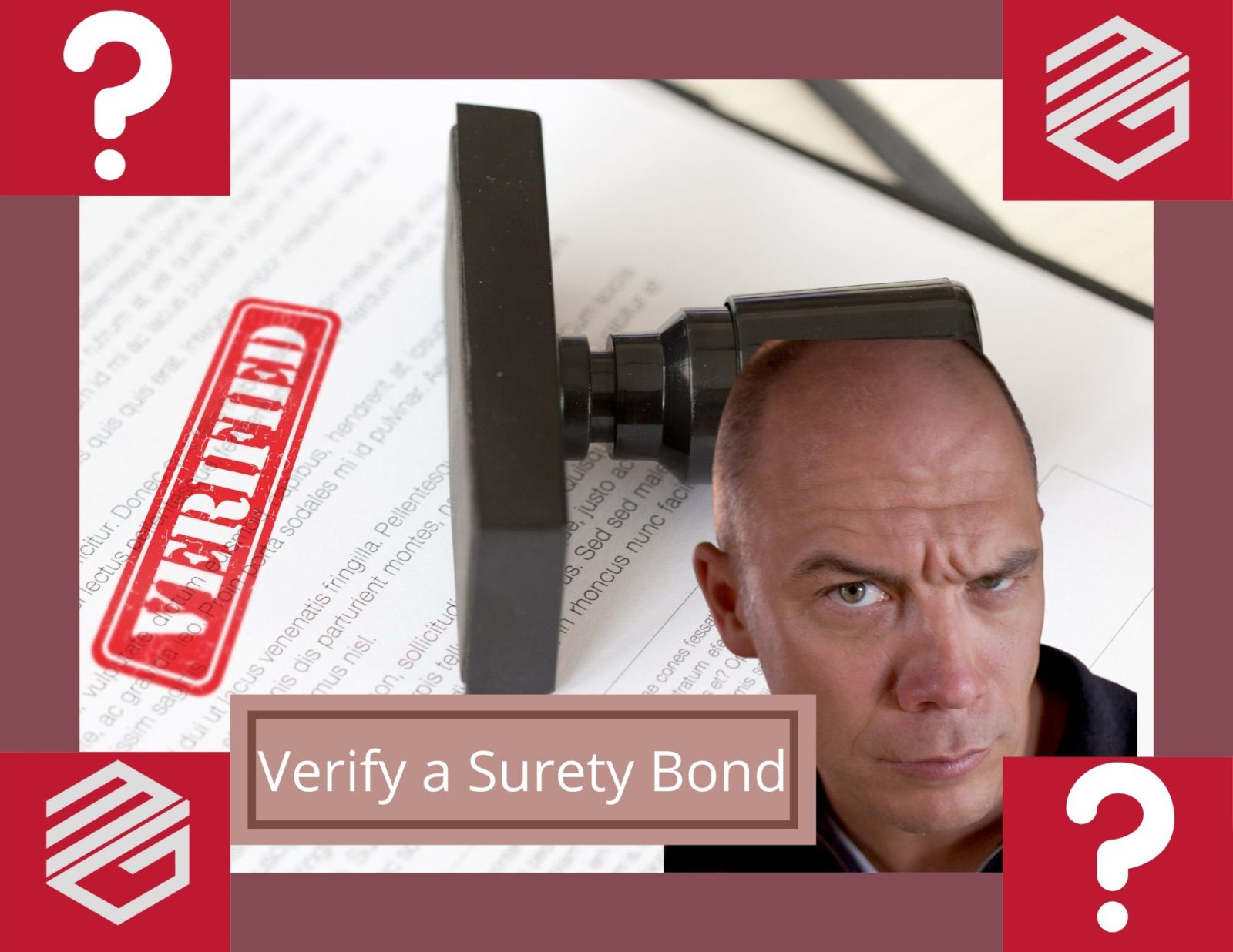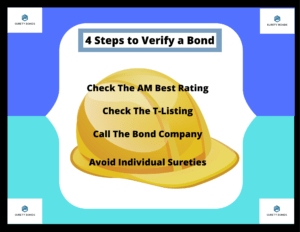Surety bonds serve to protect the obligee by guaranteeing the performance or payment of an obligation. A valid surety bond can be an excellent tool to protect owners, consumers, contractors, and suppliers. Unfortunately, many people who ask for surety bonds do not take the extra steps to verify those bonds or to make sure they are purchasing a valuable product. Below are the minimal steps everyone should take when verifying a surety bond.
Check The Rating
Surety bond companies are rated by different agencies based on their financial strength. That means a third party has analyzed the surety bond company and given them grades on whether they can meet their current and future obligations. A terrific rating service for this is AM Best. Their website can be found here. AM Best does require you to register but the registration is free and is useful for other products as well such as property/casualty insurance. Once you enter in a bond company, you can see a letter grade assigned to that company. At a minimum, you should make sure that the company has a rating of at least “A-.” Anything lower could suggest problems in the future.
Check The T-Listing
Another important way to check your surety bond is to verify that it is listed on the U.S. Treasury’s 570 Circular (also called a T-Listing) which can be found here. The 570 Circular lists all the surety bond companies that are approved for U.S. Government projects. If you are bonding a Federal contract, your surety bond company must be on this list. Additionally, most states and municipalities have adopted a T-Listing requirement on their contracts as well. If a company is putting up a bond on a private project, a T-Listed surety bond company may not be required. However, read the contract. Many private contracts have this requirement as well. Even if a contract does not require a T-Listing, you should still check the rating. Refer to the paragraph above.
Call The Bond Company or Broker
This is a very easy and often ignored step. Unfortunately, fraud exists, and you may be holding what looks like a legitimate surety bond from a highly rated and T-Listed bond company. But what if the bond is fraudulent? You may find yourself without the protection you thought you had. Each bond will have the name of the issuing company on it. It’s a good practice to pick up the phone and call that surety bond company or the issuing broker and make sure the bond is valid and binding.
Avoid Individual Surety Bonds
The verification techniques we have discussed to this point involved “Corporate” surety bond companies. These are typically large, highly rated companies with significant liquid assets to pay claims. The alternative are “Individual” surety bond companies. These bond companies are not rated by agencies such as AM Best and are often backed by fraudulent or questionable assets as is the case in this article by ENR. Usually, this fraud is not discovered until there is a claim and there are no assets to back it up. Sometimes, the Principal ends up paying the bond premium twice because the bond is flat out rejected. Do not fall victim to one of these schemes. Make sure your bond is issued by a “Corporate” surety bond company.
Surety bonds are a wonderful tool to mitigate risk. Verifying a surety bond is important to make sure they are providing the protection you expect. At MG Surety Bonds, our people can help you verify your bonds and put you with the world’s best surety bond companies.
If you are a contractor who needs a surety bond and someone with the expertise to help you, contact MG Surety today. We want to be your bond broker for life!


